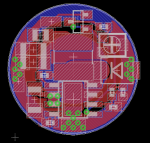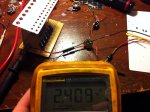Garoq
0
- Joined
- Aug 27, 2010
- Messages
- 1,525
- Points
- 83
That's a good question. Maybe not enough people have voiced a demand for them. SL has some but they aren't selling them separately, only in a driver and pill assembly for an expensive $44.99. DIY 2.2A Driver & Pill Module
Someone needs to have a large number of these made and sell them at a reasonable price.
The drivers are expensive because I only had a very small number produced so far. I plan to have a larger quantity of these made and available at a reasonable price ASAP.

BTW these drivers are currently adjustable in the range of about 1.6 to 2.3A. They are in fact 16.8mm in diameter and fit a C6-style brass ring. If there is interest I will make them available in two or more ranges that will cover a wider spectrum of mA capability.
Last edited:









